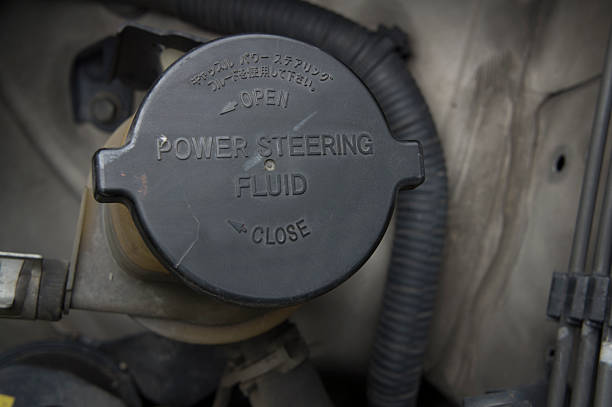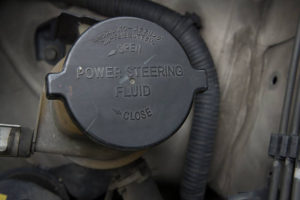Before You Begin
Today there are multiple types of power steering in use, so replacing the fluid may not be necessary. If your vehicle does utilize hydraulic fluid for power steering, there are a few things you may want to know. Although most new cars won’t require power steering fluid, many used vehicles likely will. Before jumping into any automotive service, be sure to have the necessities on hand. A turkey baster, new fluid and cleaning supplies are among the more prevalent supplies for changing power steering fluid.
Is It Necessary
Used vehicles change hands many times. Service records can be hard to find and there’s a wide variety of recommended power steering fluid change intervals. It can be difficult to know exactly when to perform one. Changing the power steering fluid can be cheap insurance against doubt. It isn’t an expensive endeavor and is one of the easier services to accomplish at home without fancy equipment. Perhaps most important, paying attention to what your car tells you while you drive can indicate if one is needed. Hard steering, belt squealing or struggling pump when turning can all point to this service being a good starting point. The wheel of any vehicle with power steering should be relatively easy to turn.
Note the Colors
Power steering fluid does come in different colors but, much like automatic transmission fluid, is typically red. In fact, some manufacturers use the same fluid for both systems. Check the owner’s manual for your vehicle to see what the manufacturer recommends. If your car leaves red spots wherever you park, chances are there is a leak in the power steering system. The leak could be coming from the lines that supply the fluid or from the hydraulic pump itself.
Look for Leaks
A great place to start is with the hydraulic lines that are regularly under high pressure and prone to leaks. Even if you don’t notice wet spots on the ground the lines may be soaked in fluid. This could mean a leak that is too small to drip, only drips after running for a few minutes or burns off when driving. There could also be a leaky seal that coats the outside of a hose. Any of these situations could be diagnosed further by washing the exterior of all the parts with Brake Clean or other parts cleaner, running the engine or driving a short distance and checking for the first location of a wet spot. This method could be particularly useful if the engine bay appears to show leaks everywhere and it’s been a while since the last service or check up. Cleaning up and then checking for leaks could point to one bad part making a mess.
Check for Bubbles
Air bubbles are common within a power steering system and can create the feeling of little or no power steering. This can occur even with all new parts working as they should. Bubbles can be caused by a small leak, loose fittings or even not having put enough fluid in after a service. To check for air bubbles, as the engine is running or after driving, check the fluid level at the reservoir. Add more if needed then turn the steering wheel all the way a few times to cycle the system and help remove any trapped air.
Drain and Refill
The reservoir in the vehicle will be labeled with a steering wheel image or say Power Steering. In older cars the pump is belt driven by the engine and may have its own attached container. Unless there is a significant problem or a service performed to replace a part, it’s best to drain a portion of the power steering fluid by using a turkey baster or fluid extractor to empty the reservoir and then a funnel to refill. This prevents a drastic change in viscosity that could cause components on the edge to fail completely. If a full fluid flush is needed there may be a drain plug on the steering rack. The lines can also be separated from the steering rack, pump or reservoir to facilitate drainage. Then reconnect, refill and clean up before removing bubbles and checking for leaks.
Test Drive
After a successful fluid replacement, it is a good idea to go for a test drive. With your engine running and vehicle in park, turn left and right. This should now require minimal effort. Then take your car for a lap around the block. If steering becomes difficult or your car makes a squealing noise while turning seek out a professional to further diagnose the steering system.

